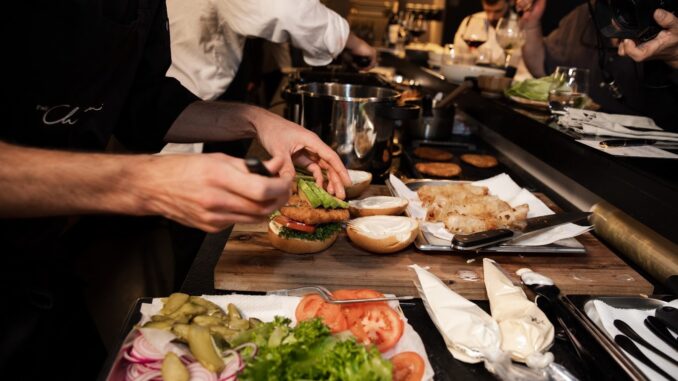
11.11.2022
According to new research findings, restaurant chefs are optimistic that cultivated meat will become fully integrated into mainstream hospitality culture and restaurants relatively soon, with 79% believing it will happen in less than one year – indicating diners and consumers alike are eager for the commercialization of cultivated meat.
According to the Good Food Institute, a nonprofit think tank and international network of organizations working to accelerate alternative protein innovation, cultivated meat, also known as cultured meat, is genuine animal meat (including seafood and organ meats) that is produced by cultivating animal cells directly. This production method eliminates the need to raise and farm animals for food. Cultivated meat is made of the same cell types arranged in the same or similar structure as animal tissues, thus replicating the sensory and nutritional profiles of conventional meat.
The new research, published by foodtech company SuperMeat, was conducted by Censuswide, an independent market research consultancy. The survey took place online with 251 chefs and/or food-service professionals in the United States between July and September of this year.
According to research findings, chefs across America, spanning fine dining to fast food, 86% are interested in serving cultivated meat or poultry; 22% of chefs indicated they are “very interested”. 84% of chefs would consider replacing traditional meat with cultivated meat or poultry on their menus, if pricing were similar. 77% of chefs would be willing to pay a premium for cultivated meats and poultry due to its benefits, most importantly food safety and environmental friendliness – in fact, two thirds of chefs are willing to pay an 11-15% markup. According to the company, chefs are most interested in trying cultivated poultry compared to other meat at 51%, followed by cultivated beef at 38%.
Reflective of US dining habits, the type of cultivated meat chefs are most interested in trying is poultry with 51% indicating they would be interested in tasting it, while the remaining choices of beef, exotic meats, seafood and pork were pretty evenly split from 38% to 35%.
There were, however, some notable differences in meat preferences based on region and type of restaurant:
- While most regions had similar opinions, chefs from the South were vastly different with beef and exotic meats being tied as the top choice at 44%, and poultry being selected by only 26% of chefs
- Pork was the top choice for fine dining chefs at 52%, whereas poultry was by far the highest choice for those working in fast food at 62%
- Those who cook mainly American cuisine also heavily favored poultry (64%), while those focused on Italian cuisine leaned toward seafood (56%), with chefs in Japanese, French and Indian cuisines favoring exotic meats
Concern for the environment and animal wellness, health and dietary restrictions and other lifestyle choices have all contributed to higher interest in meat alternatives on menus. In fact, 65% of chefs have seen increased demand in the last five years – in particular, 87% of restaurants in the Midwest and 82% of fast-food establishments noted the rise in consumer interest for meat alternatives.
- 86% of chefs who cook mainly Japanese cuisine saw an increase in demand for alternative meat compared with only 48% of Italian cuisine chefs
- Today, 60% use plant-based ingredients to create their own alternative options, and 45% use existing/off-the-shelf plant-based meat alternatives
- If it were an option, 80% would consider cultivated meat in place of meat alternatives on their menu
Chefs have a lot to consider when choosing menu items including taste, cost, customer demand and more – and these major factors determine if and why they would incorporate cultivated meat into their menus. According to the research, food safety was cited as chefs’ top motivator for serving cultivated meat, with more than half indicating it was important (51%). Other key factors are environmental benefits and customer demand.
Motivators differed significantly based on type of establishment as well, fine dining chefs pointed to environmental benefits as a top motivator (52%), followed by control of taste and texture (48%), whereas those working in fast food establishments were more concerned about food safety (60%).
According to the research, most chefs indicated they would be early adopters once cultivated meat became available, with more than half (52%) saying they would be willing to add cultivated meat and poultry to their menu one to two months after it became available. Chefs in the West and Northeast are likely to add cultivated meat much more quickly with 23% and 21% respectively saying they would include it on their menu immediately after it became available, while chefs from the South were much more hesitant with more than half (51%) saying they would wait three to six months.

